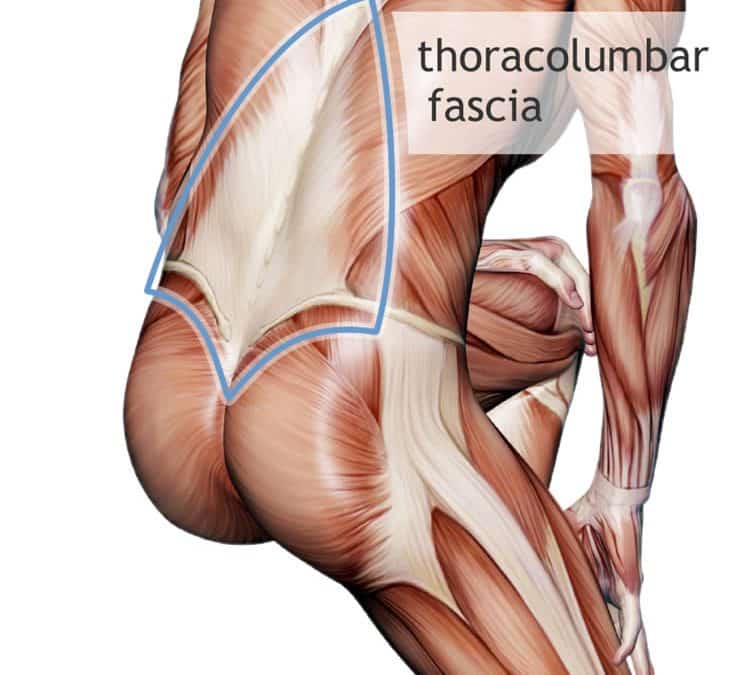UNDERSTANDING YOUR FASCIA.
WHAT IS FASCIA?
Under your skin, encasing your body and webbing its way through your insides like spider webs, is fascia. Fascia is made up primarily of densely packed collagen fibers that create a full body system of sheets, chords and bags that wrap, divide and permeate every one of your muscles, bones, nerves, blood vessels and organs. Every bit of you is encased in it. You’re protected by fascia, connected by fascia and kept in taut human shape by fascia.
Fascia is a major player in every movement you make and every injury you’ve ever had, but until five years ago nobody paid it any attention. And now they’re making up for lost time.
WHAT DOES THIS HAVE TO DO WITH YOU?
Grab hold of the collar of your shirt and give it a little tug. Your whole shirt responds, right? That’s a bit like fascia. It fits like a giant, body-hugging T-shirt over your whole body, from the top of your head to the tips of your toes and crisscrossing back and forth and through and back again. You can’t move just one piece of it, and you can’t make a move without bringing it along.
Now, pull the collar of your shirt again, only this time, hold onto it for eight hours. That’s about the time you spend leaning forward over a desk or computer or steering wheel, right? Now, pull it 2,500 times. That’s about how many steps you’d take on a half-hour run. Your shirt probably isn’t looking too good at this point.
But, this isn’t bad news. Every bit of the damage you’ve caused your fascia is reversible, and every one of the problems it’s caused you were avoidable. You take care of your muscles with stretching and foam rolling and massage. You take care of your bones with diet and restraint. You never knew that you needed to take care of your fascia, but now you do. You may just shake that nagging injury after all.
HOW TO TAKE CARE OF YOUR FASCIA?
FOLLOW THE FASCIA WORKSHOP AT YOGASPOT!
Regularly, Yoga Spot organizes workshops on Fascia release. Linda, the teacher, shows you how you can easily loosen up your fascia. You ‘ll feel a deep release of tension and stiffness followed by full relaxtion. The workshop gives you many easy exercises and handy tips to take home. So that you will be able to keep your fascia healthy and remain/regain a
flexible and relaxed body (and mind).
MOVE IT OR LOSE IT:
Sticky adhesions form between fascial surfaces that aren’t regularly moved, and over time these adhesions get strong enough to inhibit range of motion. Take a few minutes first thing in the morning to roll around in bed and really stretch out, head to toe, just like a cat after a nap.
STAY LUBRICATED:
Just like every other tissue in your body, your fascia is made of water. It works better, moves better and feels better when it’s wet. So, drink!
STRETCH YOUR MUSCLES:
When your muscles are chronically tight the surrounding fascia tightens along with them. Over time the fascia becomes rigid, compressing the muscles and the nerves.
STRETCH YOUR FASCIA:
Once your fascia has tightened up, it doesn’t want to let go. Because the fascia can withstand up to 2,000 pounds of pressure per square inch, you’re not going to force your way through, so stretch gently. Fascia also works in slower cycles than muscles do, both contracting and stretching more slowly. To stretch the fascia, hold gentle stretches for three to five minutes, relaxing into a hold.
If you spend all day tense and tight at a desk, ice baths may not be the best thing for you. Fifteen to 20 minutes in a warm Epsom salt bath can coax tight fascia to loosen up, releasing your muscles from their stranglehold. Make sure to follow it up with 10 minutes of light activity to keep blood from pooling in your muscles.USE A FOAM ROLLER:
Like stretching, using a foam roller on your fascia is different than on your muscles. Be gentle and slow in your movements, and when you find an area of tension hold sustained pressure for three to five minutes. You may practice self-massage with the same rules.
RESPECT YOUR BODY:
If you’re attempting to run through an injury, or returning from one with a limp, beware: Your fascia will respond to your new mechanics and, eventually, even after your injury is gone, you may maintain that same movement pattern. That’s a recipe for an injury cycle. It’s better to take some extra time than to set yourself up for long-term trouble.
At Yoga Spot, we regularly organise Fascia melting-workshops:
DATA: zondag 24 juli 15.00-17.00
zondag 25 september 16.00-18.00
zondag 13 november 15.00-17.00
PRIJS: € 30,-
“when I started the workshop my shoulders felt really stiff. After two hours I felt reborn – and also my RSI arm was feeling pain-free! Next time, I’ll be there again. It is maintaining your soupleness. Linda is a very experienced pilates teacher with a lot of knowledge about anatomy and a lot of humor. Time flew by!” – E.J.
Bron: Onze eigen Linda de Wolf natuurlijk, en ook http://www.runnersworld.com/injury-treatment/understanding-your-fascia voor het artikel



